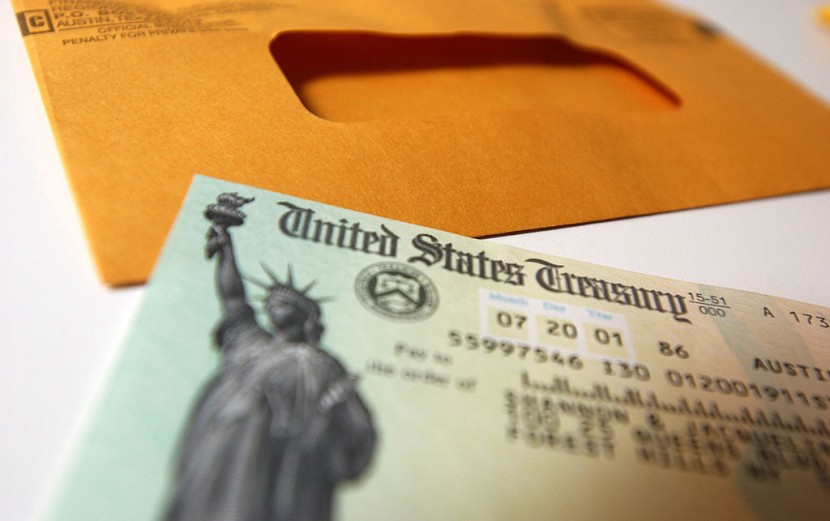
According to a nationwide poll, the #ChildTaxCredit monthly payments helped families manage their finances and afford needs, but when those payments stopped, families had trouble.
A recent study led by researchers from the Center for Poverty & Social Policy at Columbia University found that tax credit payments were dispersed monthly, preventing one in 10 children from going through a spell of poverty throughout the year, as opposed to when payments were made in a lump sum during tax season.
Eligible Americans Could Receive $750 Child Tax Credit Payments
Due to the monthly payments' reduced income fluctuation, the households were kept above the poverty line from July through December 2021. The research is based on recent data that shows the majority of Child Tax Credit recipients used the credits to cover rising costs for childcare, food, and clothing for their children.
The Center for Poverty & Social Policy co-director at Columbia University and co-author of both research, Christopher Wimer, stated, "Having some regular inflow of cash is particularly crucial for families," as per Panasiabiz.
The Connecticut 2022-2023 budget measure, which Governor Ned Lamont signed into law in May, included this credit. Those who qualified for the credit began receiving a $250 rebate each child, up to a maximum of three children, for a total of $750.
Ned Lamont, the governor of the state, declared that the Connecticut Department of Revenue Services began mailing out reimbursements at the end of August. The following income requirements had to be satisfied by qualified recipients in order for each child to receive the maximum amount:
- If you're single or married, you must make no more than $100,000.
- Head of household must earn no more than $160,000.
- Couples filing jointly must earn $200,000 or less annually.
Rebates were accepted for about 189,374 families on behalf of more than 300,000 kids after the application deadline of July 31. Due to incomplete applications or problems with eligibility, the Department of Revenue Services was reviewing an extra 32,808 applications. Early September saw the issuance of rebates in the category, The Sun reported.
Expanded Child Tax Credit
The Administration is emphasizing two programs to assist families as students return to school: the Affordable Connectivity Program (ACP), which enables qualified families to access high-speed internet, and the expanded Child Tax Credit (CTC), which offers payments to qualified families with children.
The CTC was increased under the American Rescue Plan (ARP) from $2,000 per kid to $3,600 for those under the age of 6 and $3,000 for those between the ages of 6 and 17. Many families got CTC payments in advance each month between July and December 2021, but in order to get the remainder of their CTC, they must submit a tax return for the 2021 tax year.
Families who did not receive advance payments in 2021 (for example, those who had a baby in 2021 or those who haven't paid taxes in a while and didn't use the non-filer portal) may still be eligible for the full CTC by filing a tax return.
Families should file their taxes electronically as soon as possible given that there are only a few weeks left to file a tax return this year. This will allow them to claim the entire amount of the 2021 CTC in the quickest and safest manner possible. ChildTaxCredit.gov has tools that make it easier for families to file their taxes and get the remaining enlarged CTC.
The Affordable Connectivity Program was created by the Bipartisan Infrastructure Law (BIL) to give qualified households up to $30 in monthly internet savings (or $75 on tribal territory) and a one-time $100 discount off a connected device.
Millions of families can now obtain high-speed internet without spending a dollar because to agreements the Biden-Harris Administration struck with internet service providers all around the country.
With a household income at or below 200% of the federal poverty level ($55,500 for a family of four), as well as households taking part in specific government programs, an estimated 40% of households in the nation are eligible for ACP (without regard to income).
Among others, households are eligible if at least one member receives a Pell Grant, Medicaid, SNAP, WIC, Free or Reduced Price School Lunch (including from one of the more than 33,000 Community Eligibility Provision schools), or a Pell Grant.
A one-stop shop for determining eligibility and signing up is GetInternet gov. The Department of Education also offers schools and community partners a Back to School ACP Toolkit with a ready-to-use Backpack Flyer to assist students and their families in signing up, according to Lobservateur.
Related Article : Joe Biden Warns Vladimir Putin Over Potential Use of Nuclear Weapons in Russia-Ukraine Warn
@YouTube
© 2026 HNGN, All rights reserved. Do not reproduce without permission.








